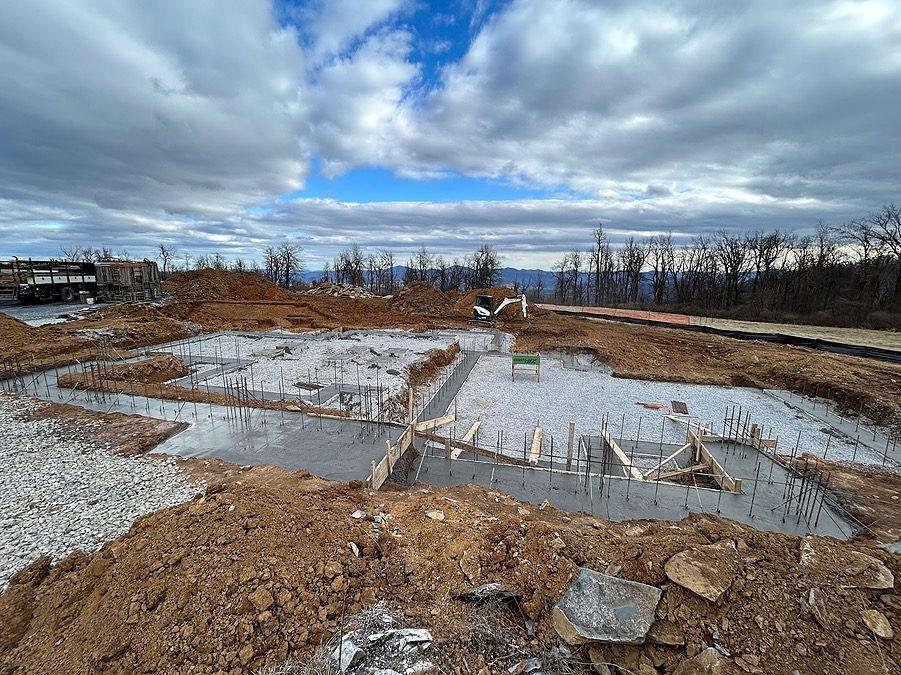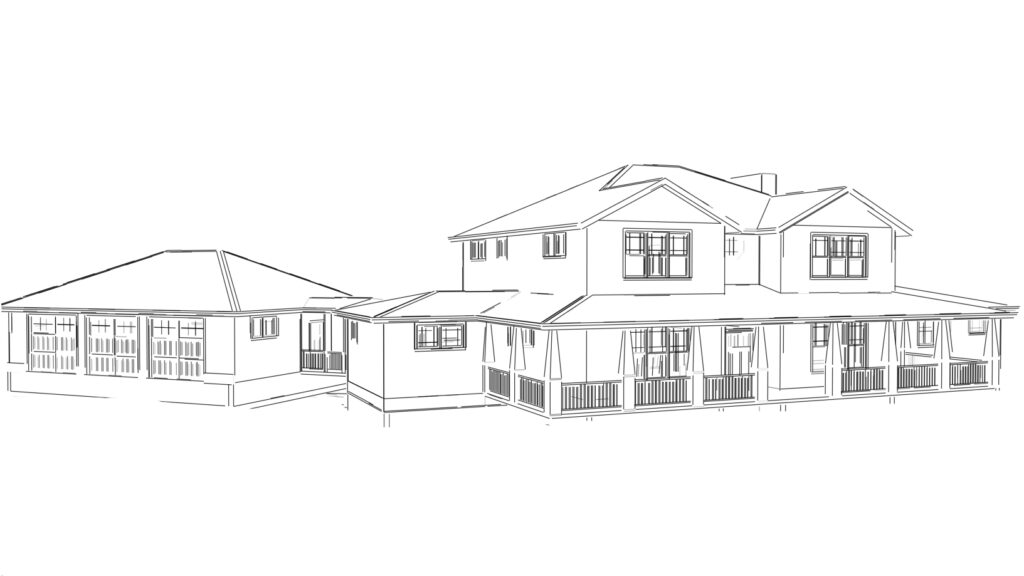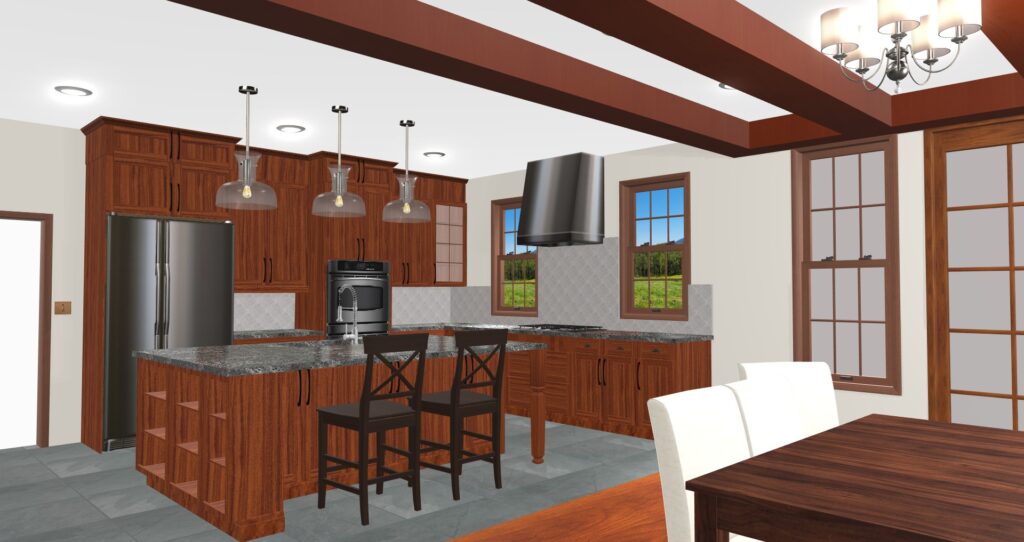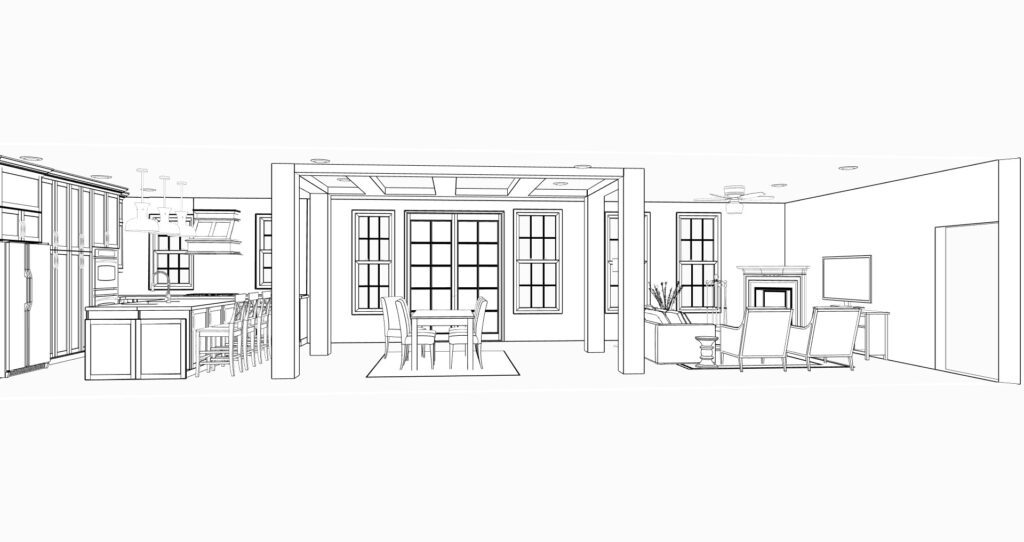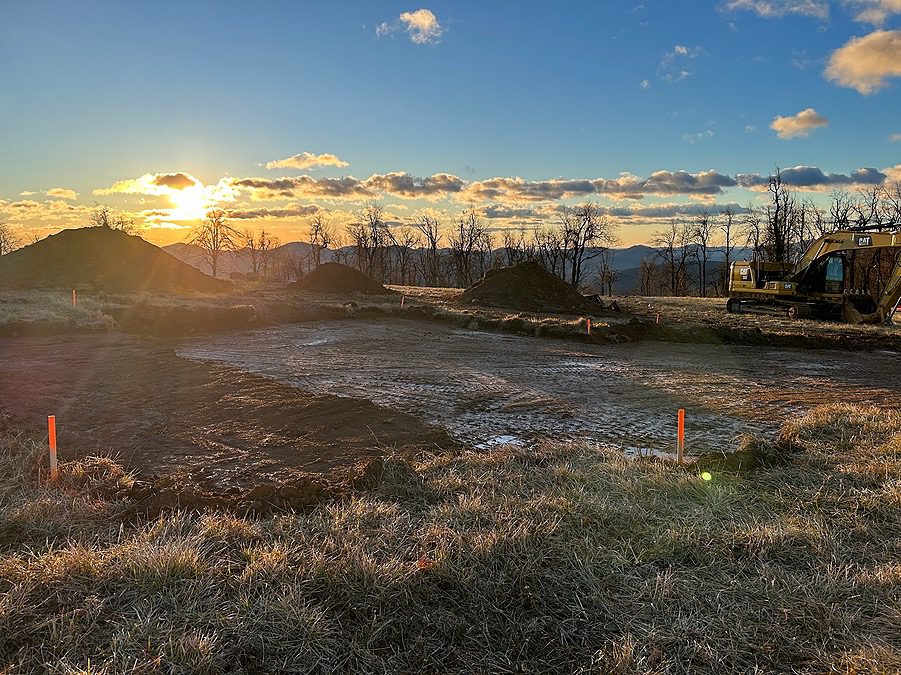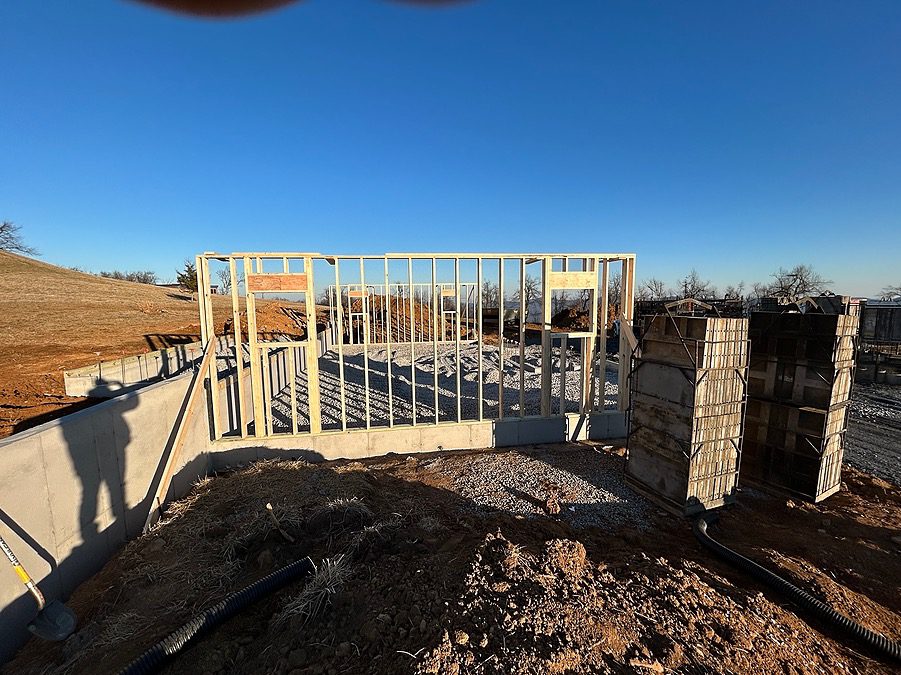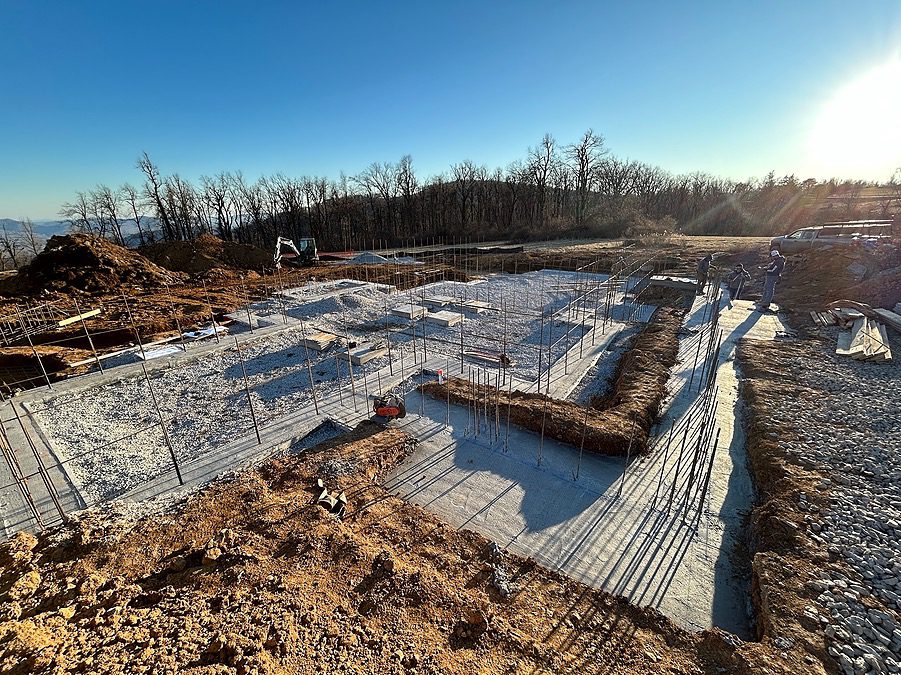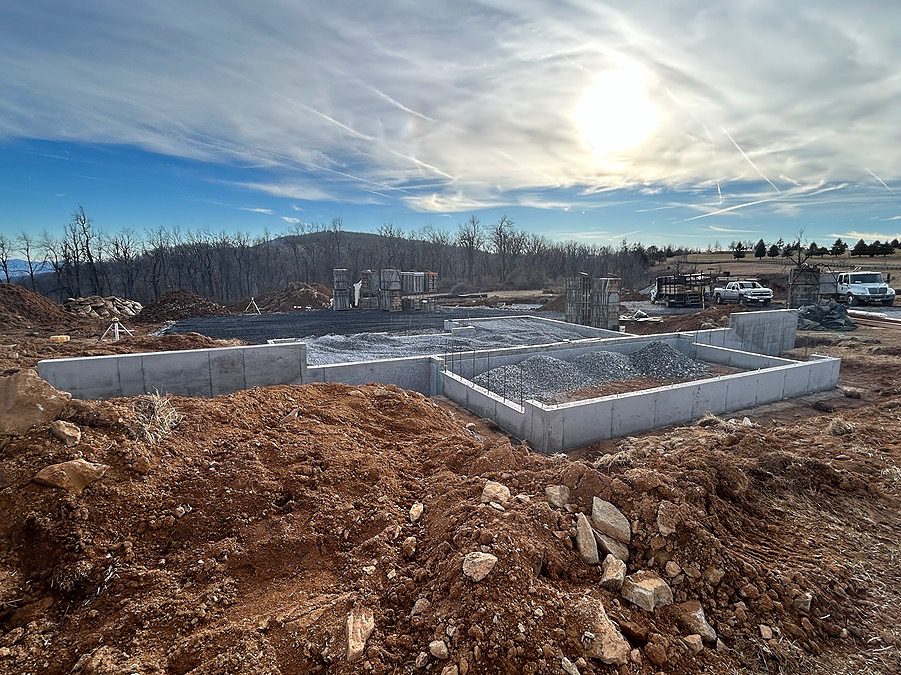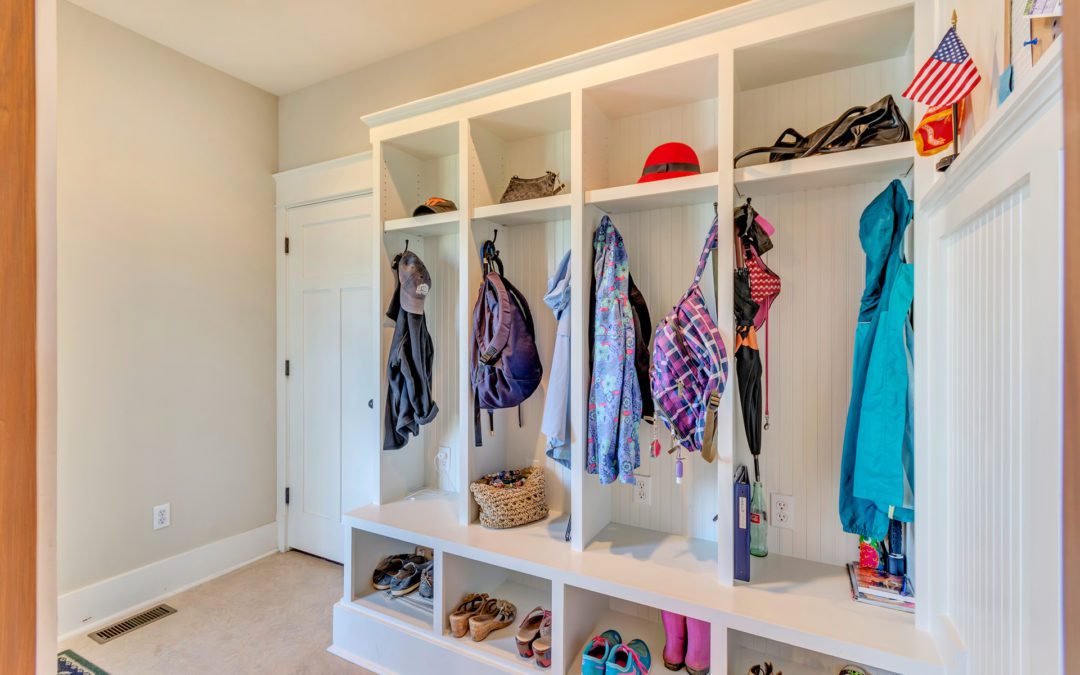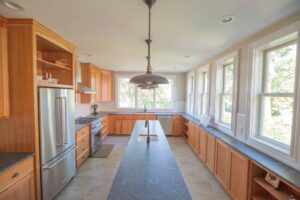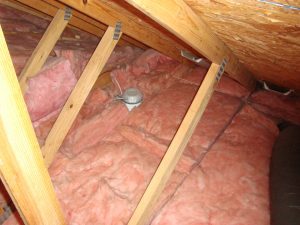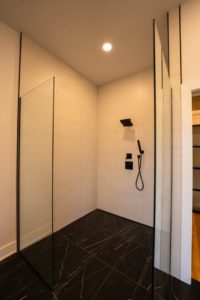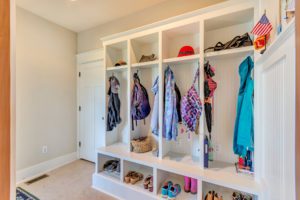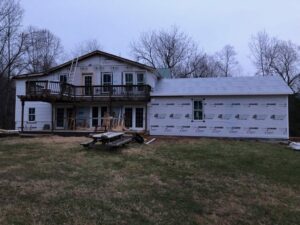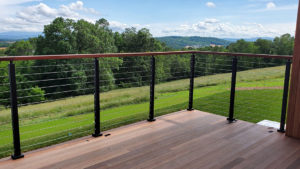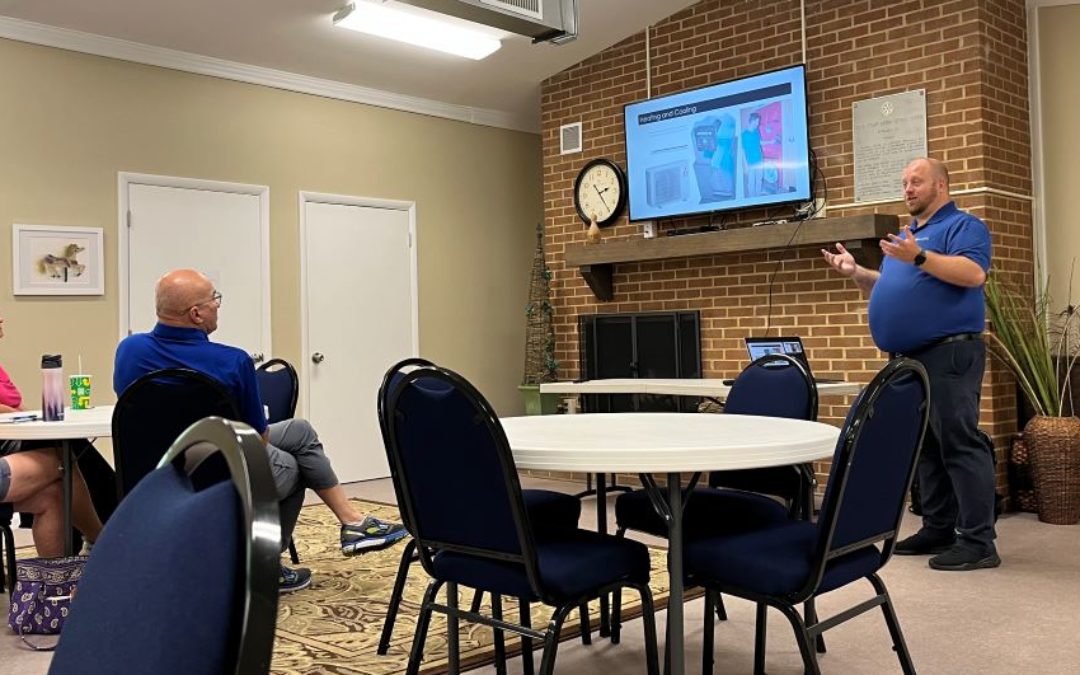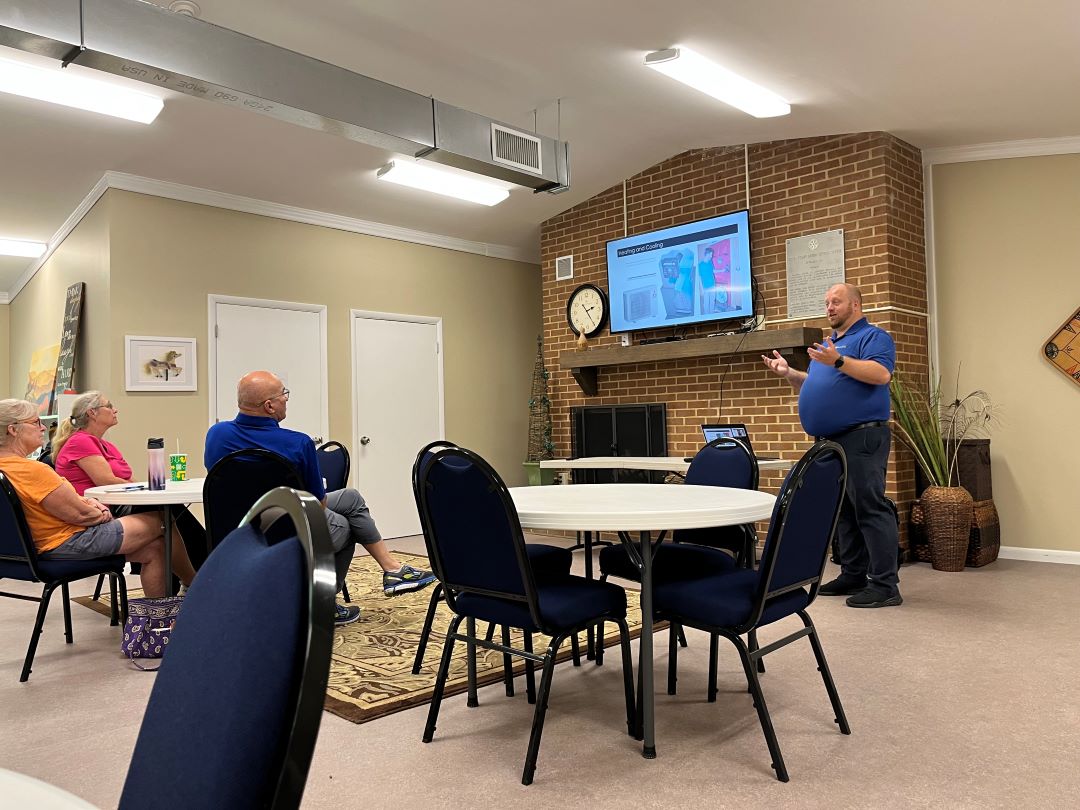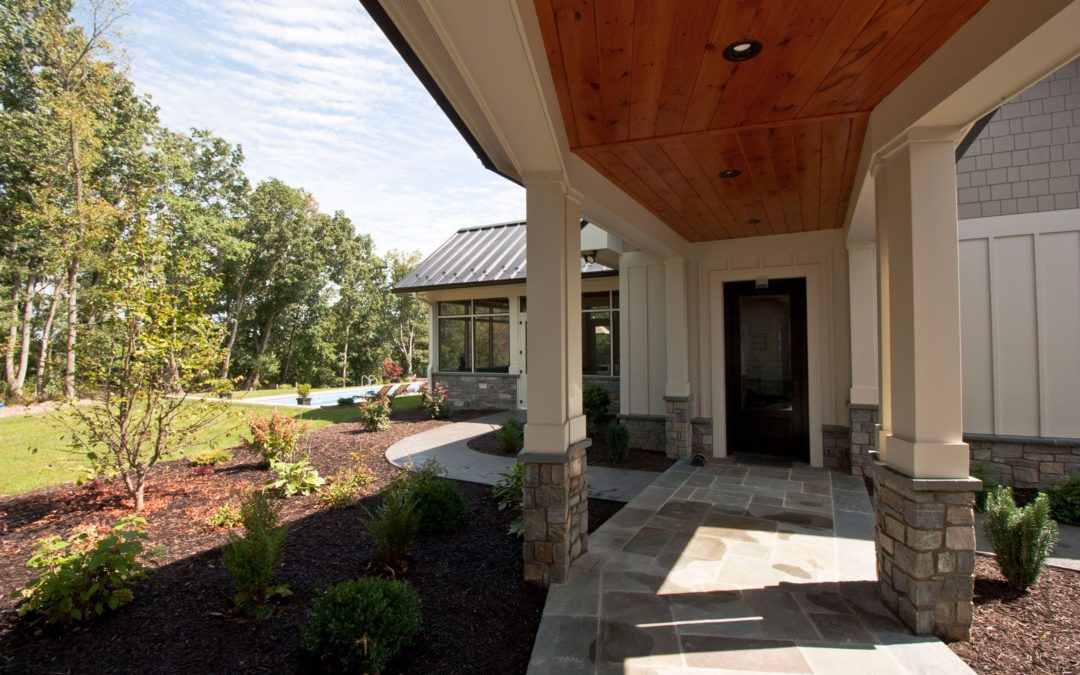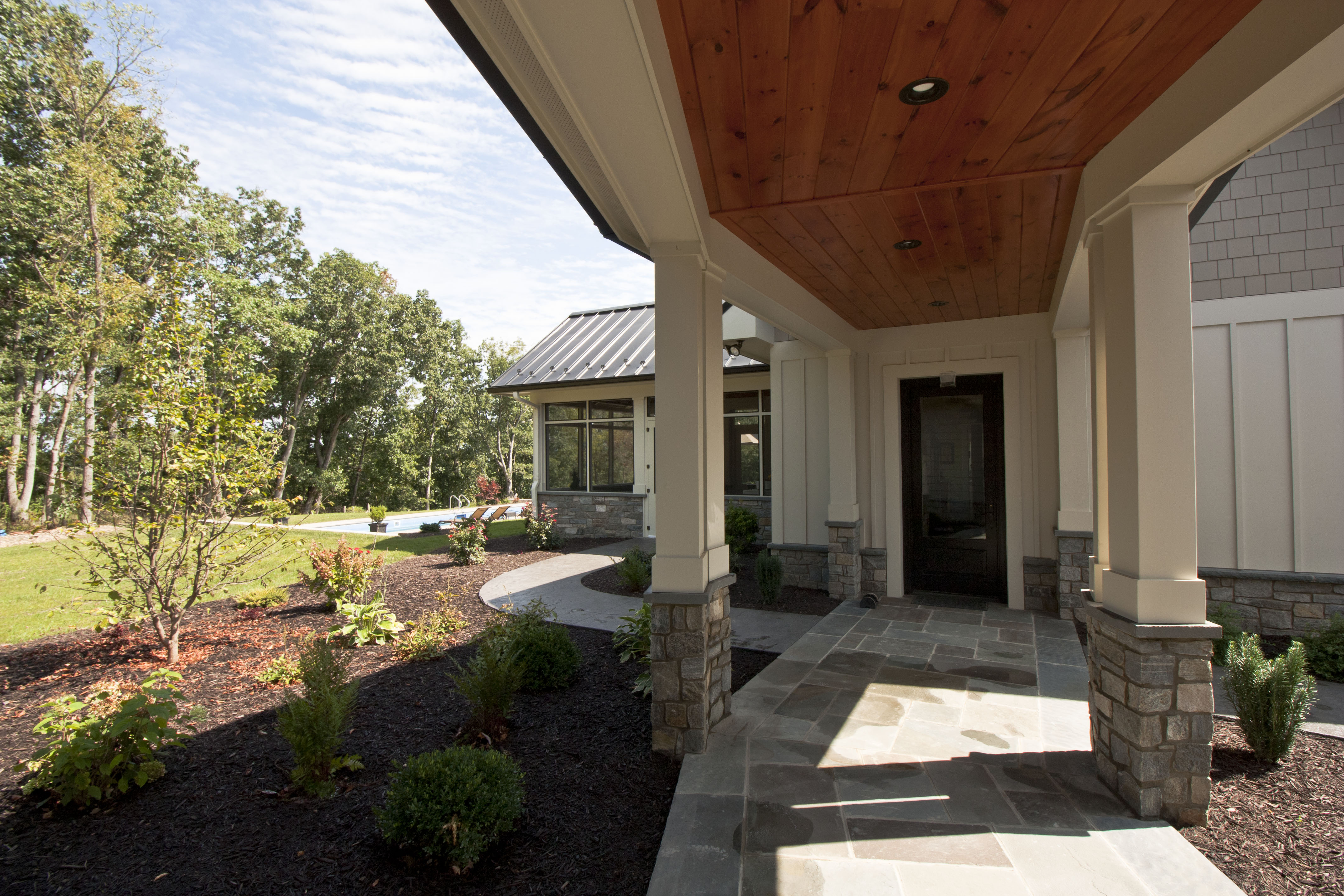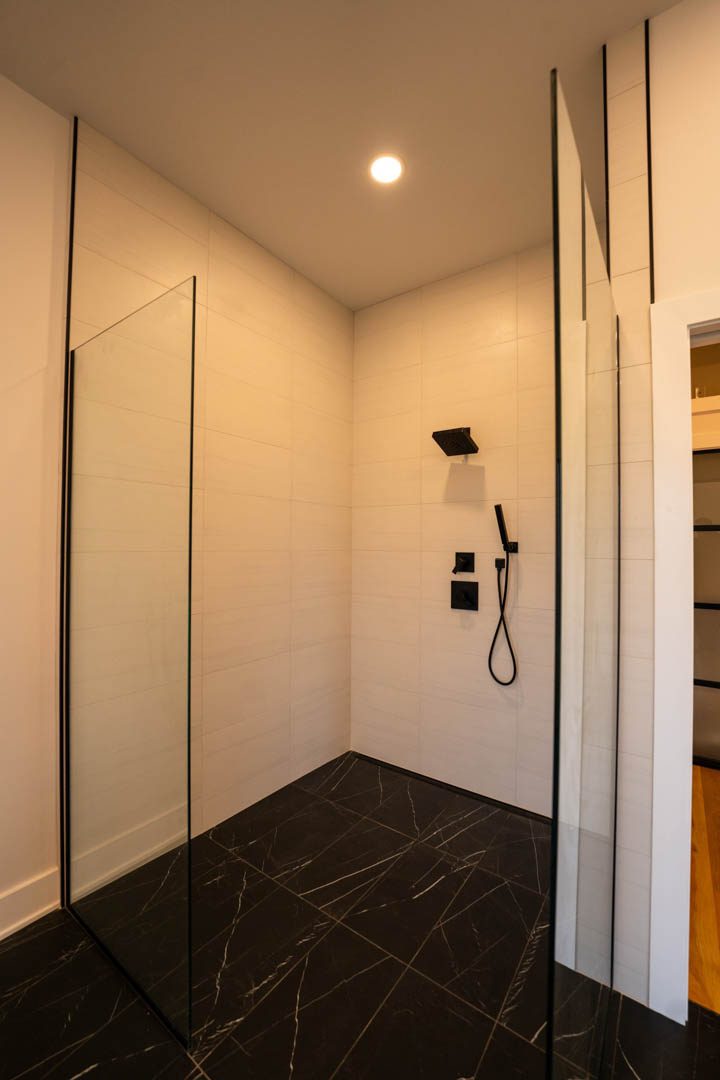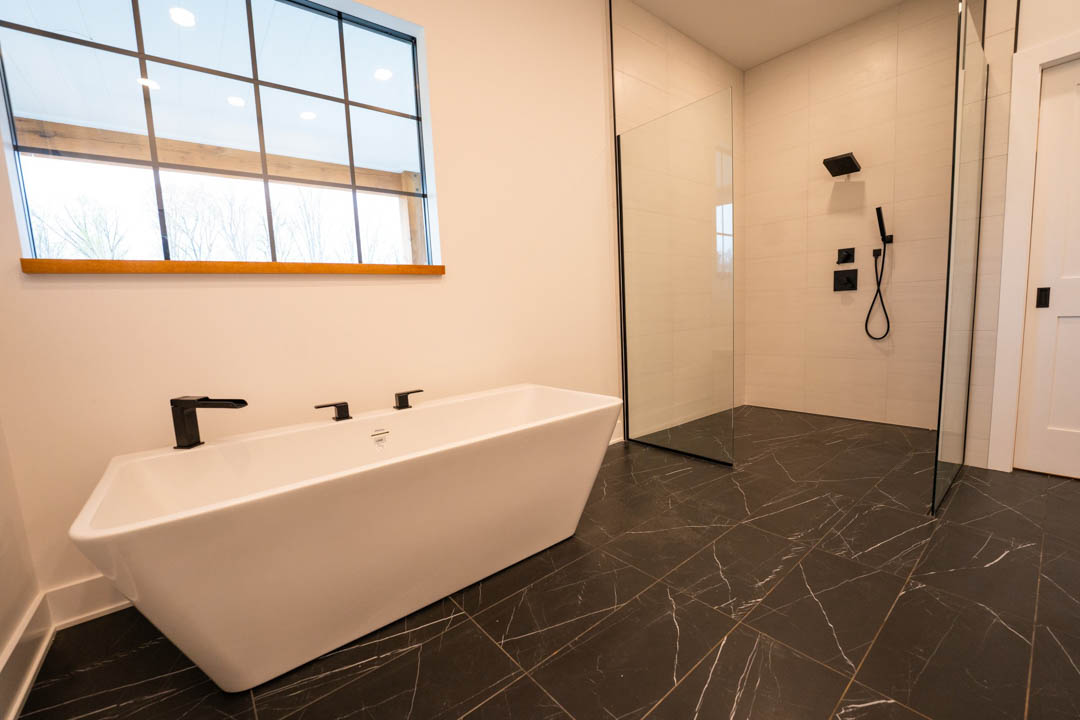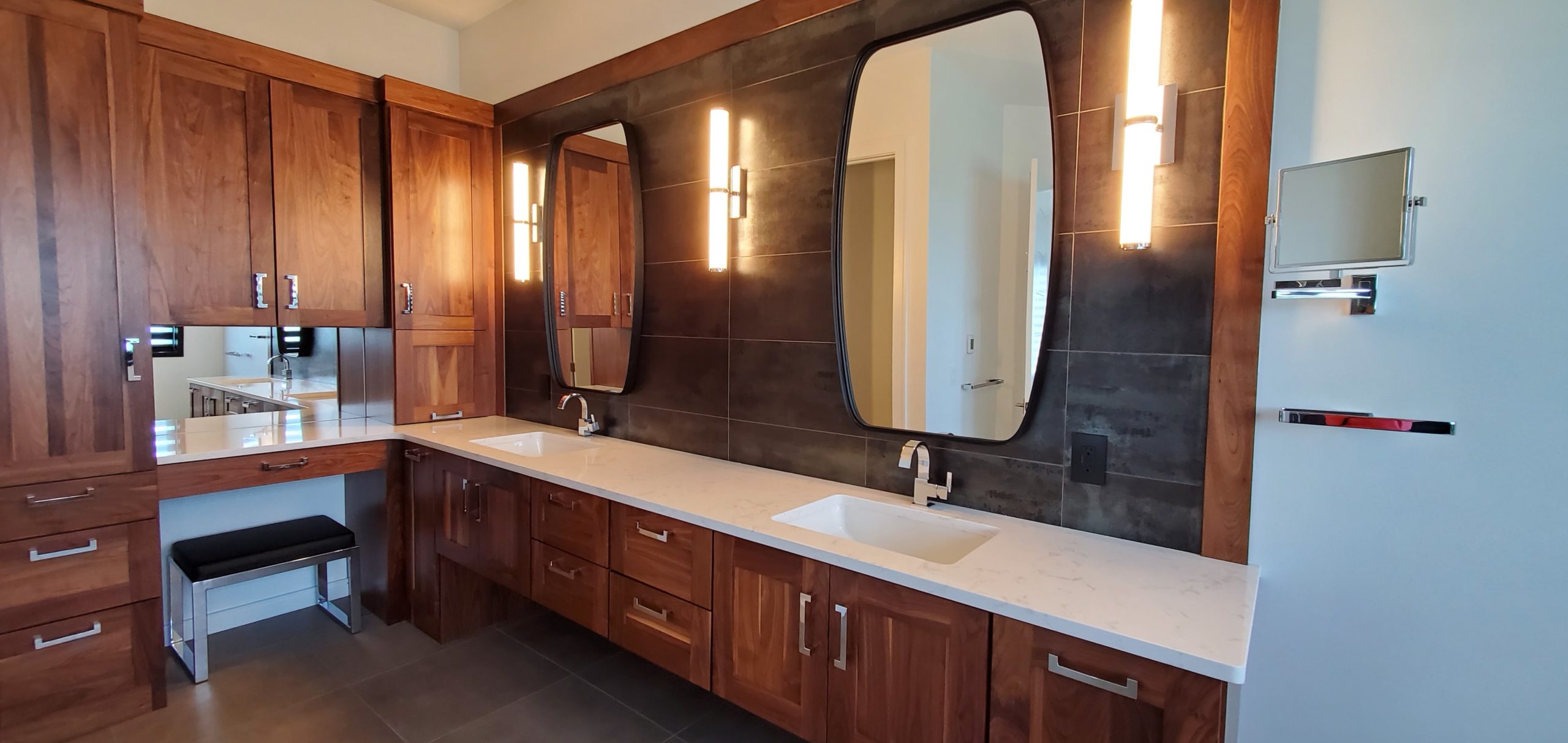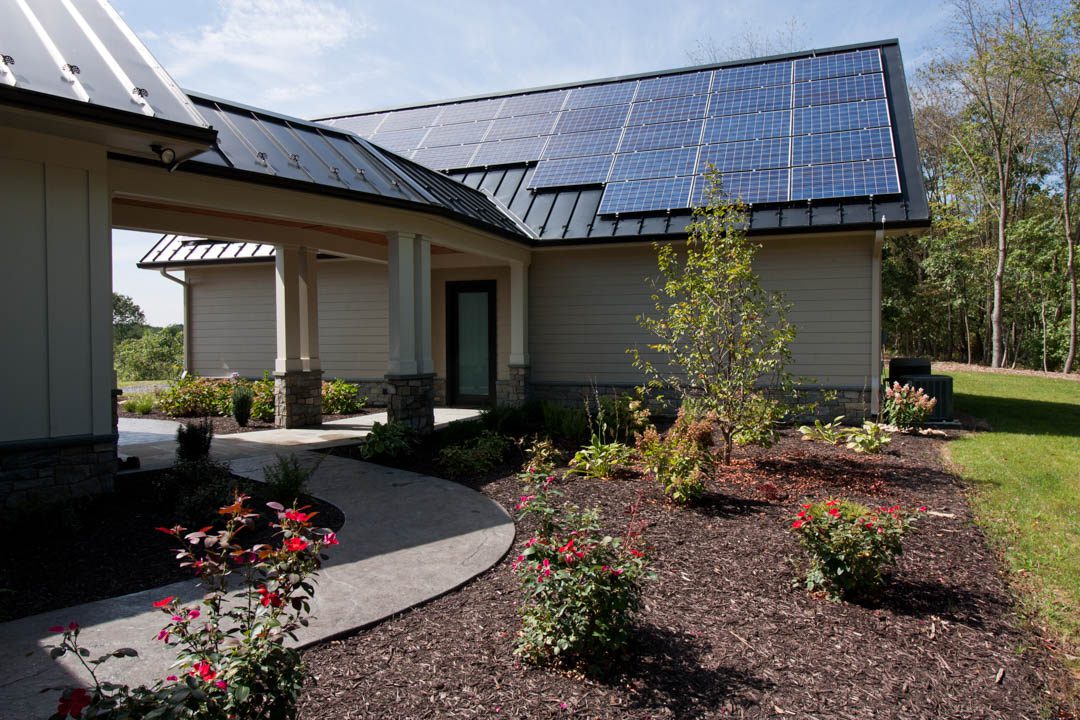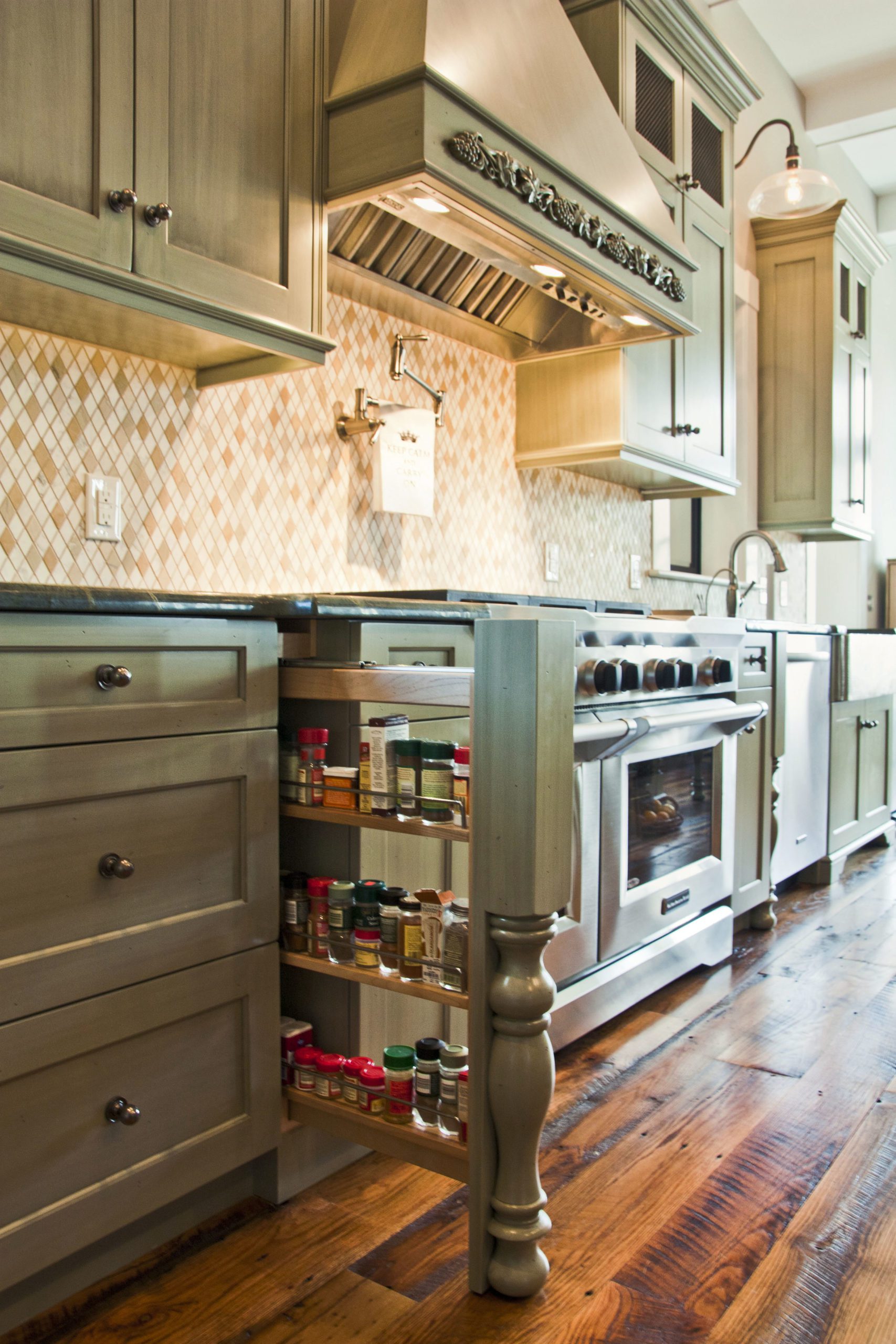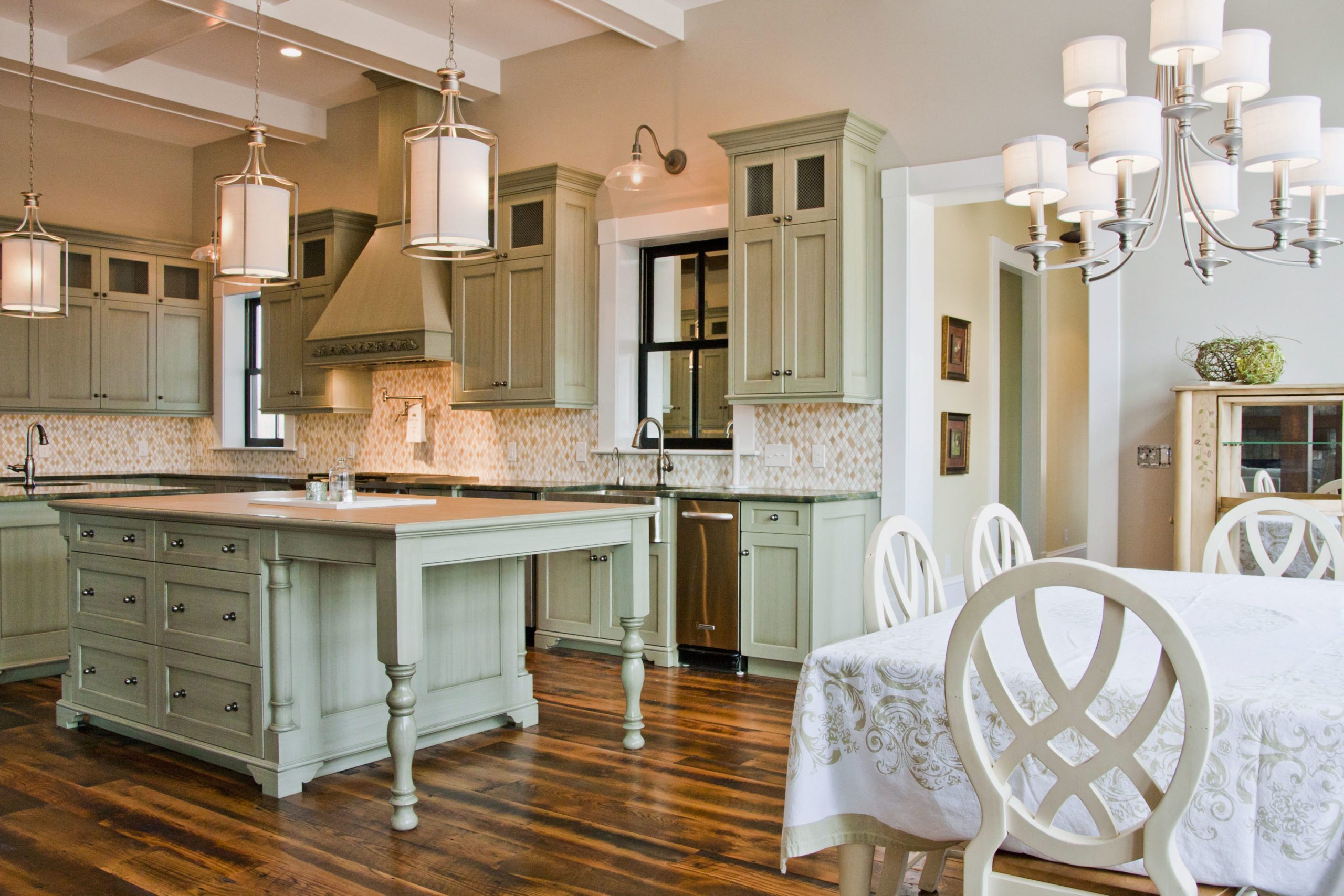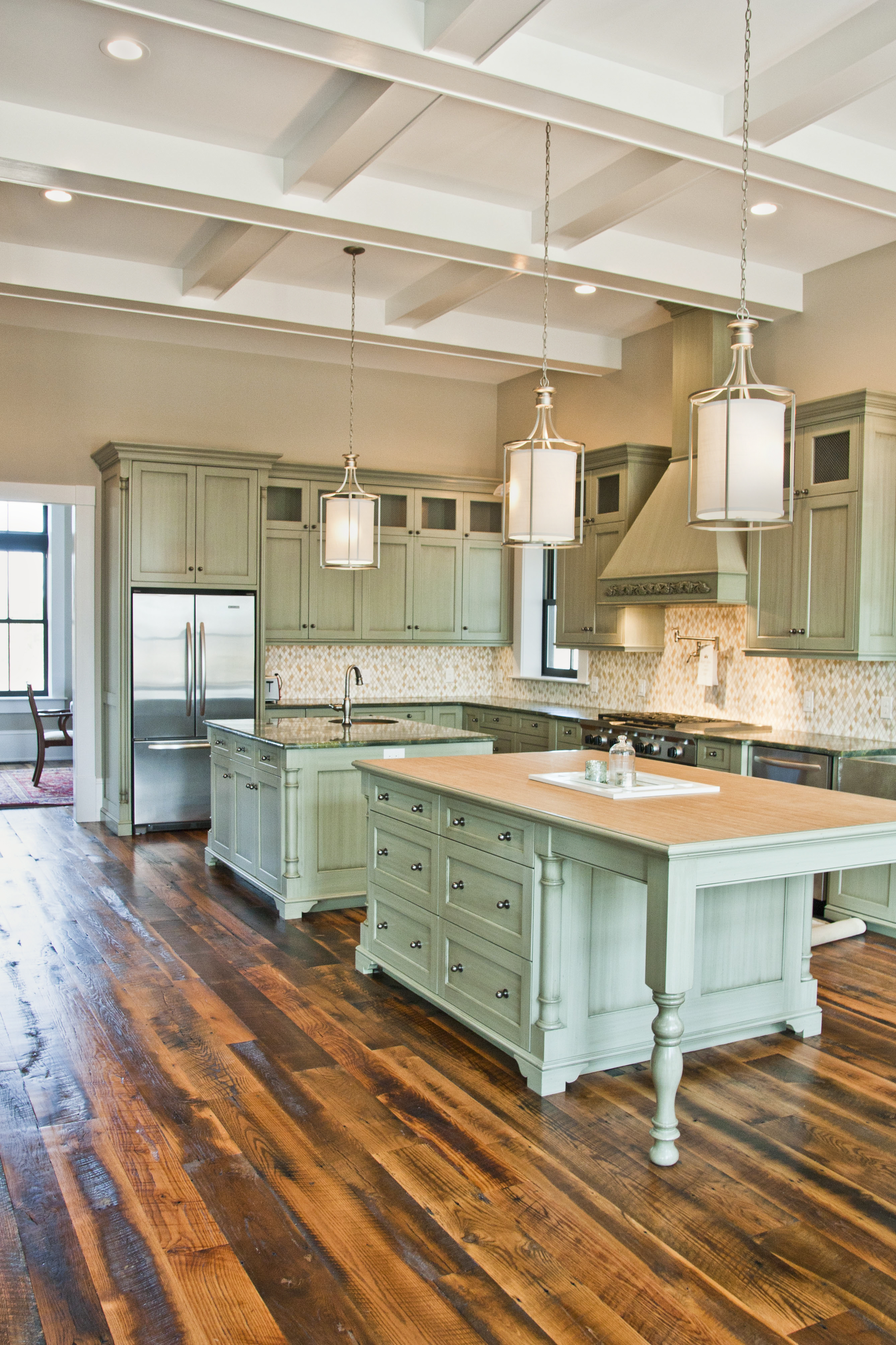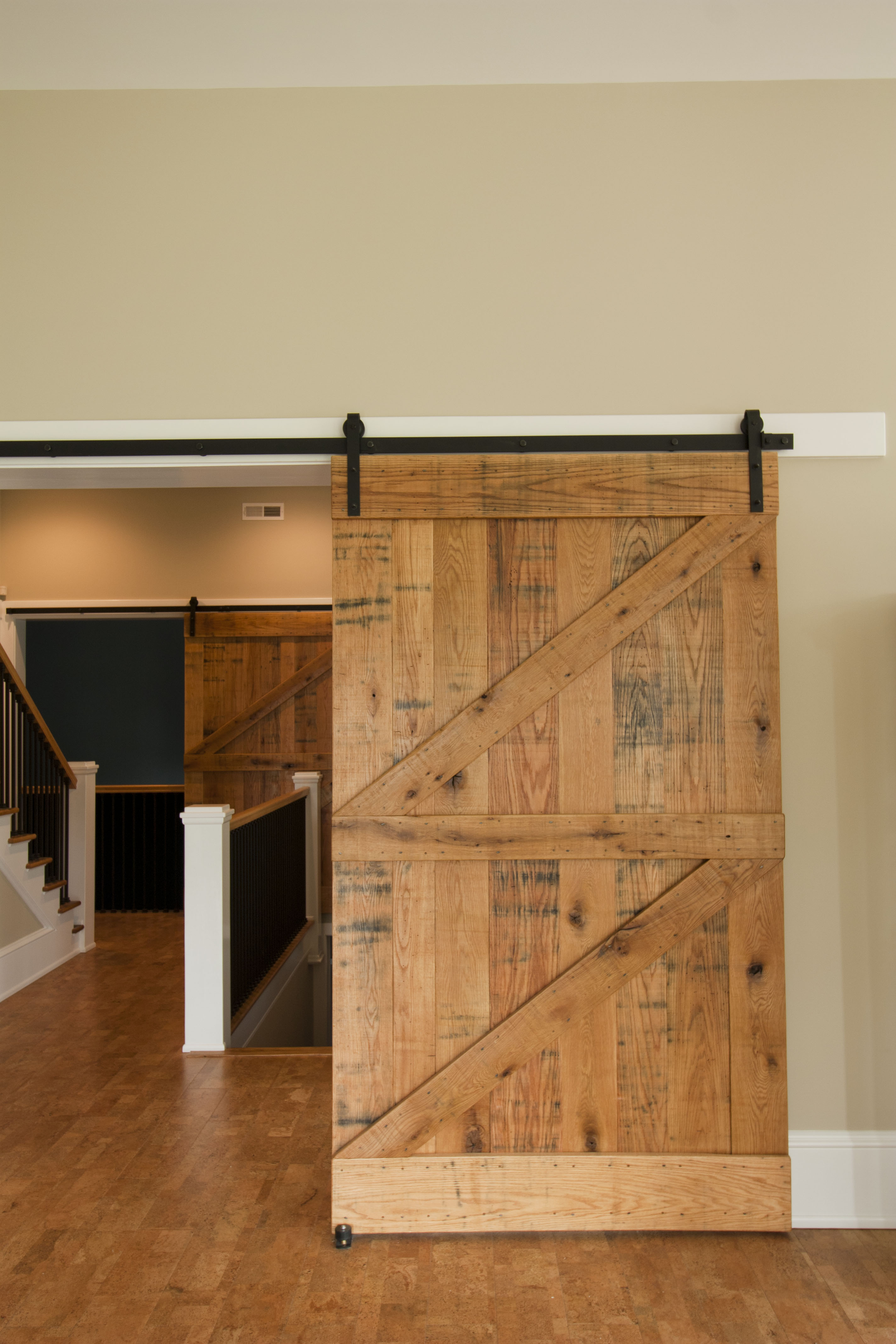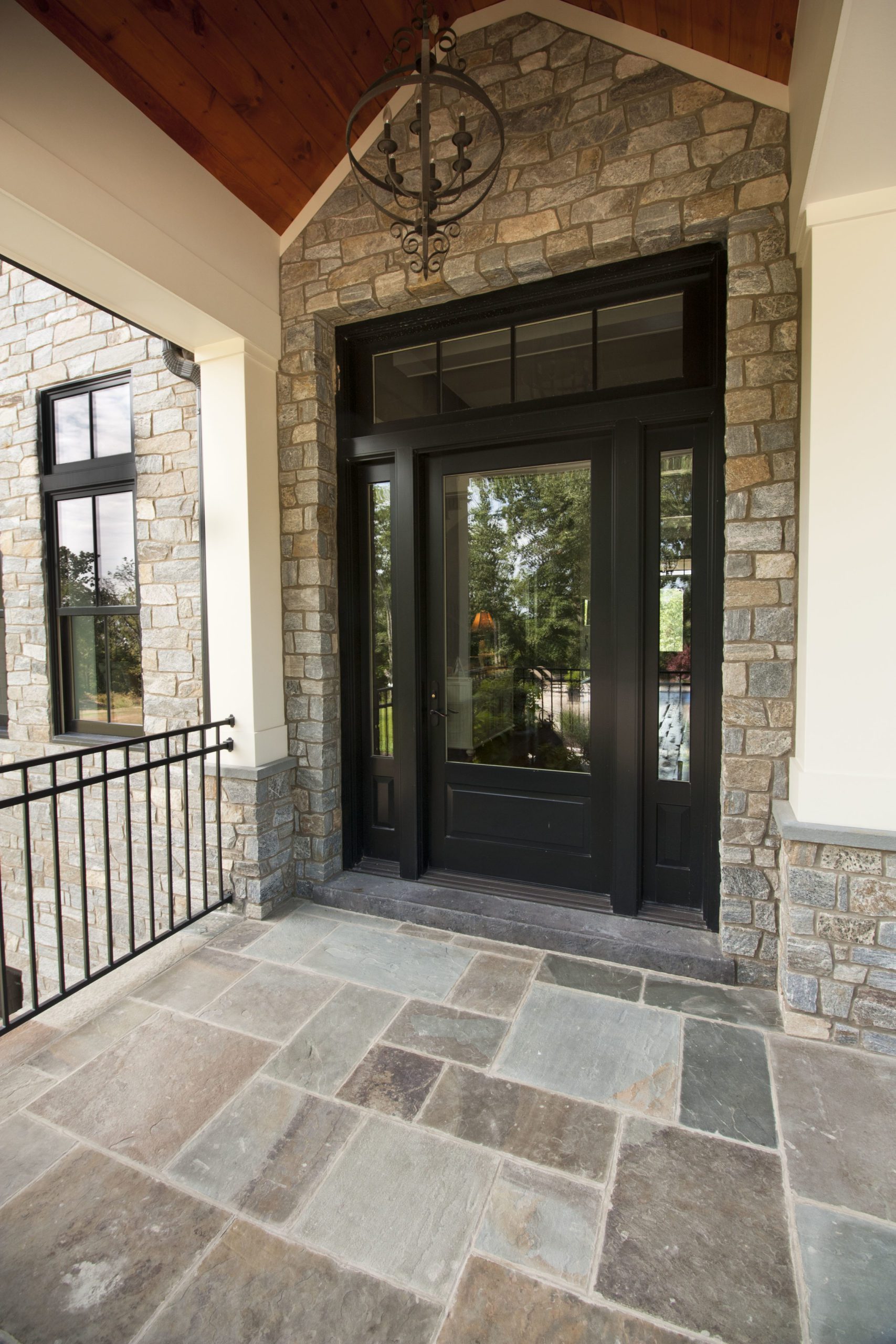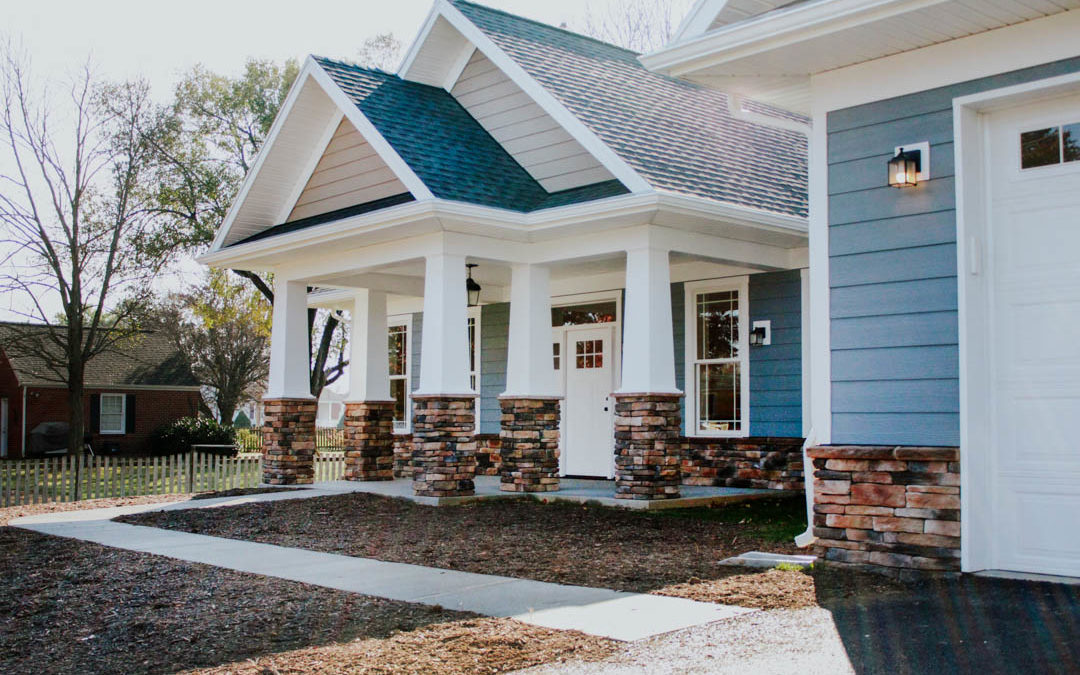
by cbhendricks | Aug 28, 2024 | aging in place, community
Assemble a Falls Prevention Team and Put Your Best Foot Forward
Falling is so common among older adults that many people think it is a normal part of aging and can only be avoided by staying at home. Fortunately, both are myths. With some preparation, we can stay safely on our feet as we age, living active and independent lives in the communities we love.
More than one in four older adults fall each year, but it is not an inevitable part of aging and can be prevented. For older adults beginning to feel vulnerable, that can seem like an overwhelming task. It’s important to remember that it’s not a one-person job. Falls prevention is best approached as a team sport. Doctors can monitor health to ensure safe movement. Occupational therapists can adjust assistive devices for best fit. And pharmacists can explain medication side effects that can impair movement.
Easy Home Modifications

(Above) Grab bars in the bathroom of Keezletown Farmhouse beside the toilet and in the roll-in shower.
Some of the most important aspects of falls prevention, however, can take place right in our homes with the support of friends and family. Here are five easy home modifications to consider making right now:
-
- Secure the bathrooms – Buy a shower seat, install grab bars, and switch to adjustable height, handheld shower heads.
- Let there be light – When bulbs burn out, replace them with bright, non-glare bulbs.
- Clear the clutter – Don’t put items on stairs. Remove clutter and throw rugs that can slip.
- Organize the go-to’s – Place frequently used items between waist and shoulder height.
- Put a bell on Buckley – Consider putting a small bell on dog or cat collars if pets are frequently underfoot. They can be a trip hazard so knowing where they are is helpful.
- Control the cords – If possible, keep cords out of the way by running them along a wall or behind furniture. If that’s not possible, tape the entire cord to the floor.
- Repair any loose brick or pavement on outdoor walkways and steps.
Upcoming Best Foot Forward Falls Prevention Open Houses
In addition to health care providers and family, community experts in aging are trained to help prevent falls. Valley Program for Aging Services (VPAS) is offering Best Foot Forward Falls Prevention Open Houses in September for older adults and caregivers.
In Harrisonburg, Best Foot Forward will be held on Wednesday Sept. 25 from 1:00-4:00 p.m. at the Simms Center Auditorium. Bring along a friend or family member for personalized falls risk assessments, Tai Chi and assistive technology demonstrations, door prizes, refreshments and more.
In Waynesboro, join the Best Foot Forward Fair on Thursday, Sept. 26 from 11:00 a.m. – 1:00 p.m. at Waynesboro Senior Services. There will be personalized fall risks assessments, gait testing, refreshments, demos, and door prizes. The Augusta Health Mobile Clinic will be on site from 11:00 a.m. – 12:00 p.m.
For more information about falls prevention open houses, visit vpas.info/education, or call 1-800-868-VPAS.
Contributed by: Leigh-Anne Lees, VPAS Community Relations Director

by Charles Hendricks | Feb 27, 2024 | aging in place, architecture, project update
Construction has started on our most recent project in Elk Rock Meadow. We also designed the Elk Rock Farmhouse and the Elk Rock Meadow Vista in this neighborhood.

The Elk Rock Meadow Craftsman Home project is a beautiful custom home designed in collaboration with our client, Herr and Company, Huntlands Landscape Architecture, Grey Fox Design Works, Dovetail Design & Cabinets, and several others. This project is a team effort to think through every detail and the final project will show the success of this strategy.

Our conversations during design focused on our usual of building science, aging in place, comfort, and of course beauty. We have thought through how life might unfold in the future and made as many provisions as possible to allow our clients to live their dream life in their new dream home.

Now the work of taking our design work to built work is in process. The site clearing and foundation work has come along quickly.

Now walls are starting to appear on the barn site.

Stay tuned as we continue to update you on the progress.




by Charles Hendricks | Feb 14, 2024 | aging in place, architecture
Is it time for a home renovation?
We are hearing from a lot of people that want to stay in their current home but need to make a few changes to get it just right. It’s a great time to start planning your renovation as builders are planning for the remainder of their year. So I thought I would share some upgrades you might want to consider for your home.
Home upgrades to consider
1. Kitchens are a common place to start working on your home. You can improve the function of your space while upgrading your aesthetics. As the kitchen has become the heart of many homes, this can also have a great impact on daily family gatherings. This historic home needed an addition to get their light and open kitchen to work while maintaining the historic character of their home.

2. While doing a renovation, it is always a good idea to look at energy upgrades to improve comfort and lower your energy bills.

3. Create an accessible home so that life’s changes will not prevent you from staying in the home you love. Door widths, kitchen function, first-floor bedrooms, and roll-in showers are just some of the aging-in-place ideas you could focus on during a renovation.

4. Getting organized in your mudroom is often another added change when we have the opportunity to renovate lifetime homes.

5. Adding a “game” room for this home was an important part of the project as our client needed a place to display their trophies.

6. As we start to think about spring weather, I know a lot of people will start dreaming of new decks and patios.

We have designed solutions for new home office space, storage closets, first-floor bedrooms, basement family rooms, and more. The first step of the design process for a renovation is to record what you like, don’t like, and what challenges you have with your existing home. Then give us a call and we can help balance your dreams with your budget with what your home can offer.

by cbhendricks | Jul 31, 2023 | aging in place, Building Science, Green Building, Indoor Air Quality
VOCs
There are many considerations when it comes to indoor air quality, and one is VOCs, which are present in all of our homes and potentially hazardous to our health.
VOC stands for Volatile Organic Compound. Many products used in home construction have these chemicals that are released into the air post-installation, called off-gassing. You might be surprised to know that VOCs are in every house and can be found in many common products including paints, lacquers, paint strippers, cleaning supplies, pesticides, building materials, printers, correction fluid, and glues. This is something to be taken seriously. VOCs can trigger asthma, eye irritation, cough, dizziness, and other adverse long-term health effects, and they are known to cause certain cancers.
Envelopes and Energy-Efficiency
Concentrations of VOCs are often found to be higher indoors than outdoors (an obvious conclusion looking at air circulation and volume of space). To compound the problem, the level of these chemicals could even be higher in an ‘energy-efficient’ home that does not have a dedicated fresh air system.
This is because the more air-tight a building envelope is, the more likely it is energy-efficient. (A building envelope refers to the walls and other materials separating the indoor air from the outdoor air). Creating an airtight home reduces energy leaks at all the gaps and cracks in your home’s walls (around windows and doors, where materials meet, plumbing penetrations, and more). This traps the air inside the home and doesn’t allow in outdoor air. While this prevents energy loss (or gain depending on the season) it also prevents the house from “airing out.” Air pressure around the home and in the home also plays a part in that, but that is for another blog on another day.
What should you do?
So what should you do if you want to save money with an energy-efficient home and you want to decrease VOCs and their harmful effects? Is this a catch-22? As scary as this may sound, it is not all doom and gloom, and there are ways to mitigate the amount of VOCs you will come into contact with in your home.
- In the construction stage, carefully select products. VOCs can be found in many products including paints, lacquers, paint strippers, cleaning supplies, pesticides, building materials, and glues. We typically select products that have low to No VOCs in them for our clients when possible.
- Include a dedicated fresh air system integrated with the heating and cooling system. This will draw in conditioned and filtered air into your home rather than relying on leaks in your home for “fresh” air.
- Open your windows occasionally (if your allergies are not too triggered by the pollen levels).
Until products are no longer made with VOCs, these strategies will not eliminate 100% of VOCs, but they will diminish a known health risk to your family.

by cbhendricks | Jun 15, 2023 | aging in place, architecture, Charles Hendricks, Interior Design
It’s been awhile since we’ve written about Aging-In-Place, but as promised, we bring Part 2 to this series focusing on aesthetic misconceptions about this type of design. (Read Part 1 here). As a reminder, you can hear more about Aging-In-Place Design on the on the WSVA Early Mornings podcast where Charles recently joined Beth Bland of Valley Program for Aging Services (VPAS) to talk about Aging in Place.
In the podcast, Beth addresses the common belief that Aging-In-Place modifications/aging friendly design can’t be beautiful or aesthetically pleasing. Unfortunately, this is a common misconception that prevents people from adding these modifications to their homes. We want to break that stereotype. You can make a beautiful house that is also accessible to people with a wide variety of abilities.
This misconception stems both from misinformation and often, a confusion of the terms “ADA compliant design” and Aging-In-Place design.” Here’s a recap from Part 1 in case you missed it.
ADA compliant design vs. Aging-In-Place modifications Recap:
Often ADA design and Aging in Place modifications overlap, but Aging in Place is centered around customizing spaces for you and your abilities. It expands beyond simply meeting the bare minimum requirements of basic building codes to creating something unique and beautiful for your day to day life. This sort of design can be added to your existing home or built into a new one.
Not only is Aging in Place customized around each individual’s physical design needs, but the entire process can be customized around your needs and might include financial, location, and relational considerations.
Beth asks, What things can you do to make aging-in-place modifications in a home look pretty?
Many designs are becoming popular that also happen to be aging friendly. In showers, you can take a tub out and put in a roll-in shower. In the interview, Charles says that he now puts no-step showers into most new houses because “they’re just gorgeous… people love them.” Example pictures below.
Bathrooms
Bathrooms are particularly important for modifications because water and soap can lead to slip and fall related accidents. For those with balance and mobility challenges, a towel bar that functions also as a grab bar can be installed. (One example here). Sinks can have open space beneath them to allow wheelchairs to slide underneath and give more access to the faucet. A curved front of a sink not only makes a sink more accessible for wheelchairs but gives easier reach for everyone because the sink follows the natural curve of our bodies.
This Modern Home has a beautiful sitting area in their restroom at the vanity (right).
View this custom home portfolio here.
Another example is to have a detached garage (left) that’s connected to the house by a breezeway. This distance from your house keeps chemicals and fumes out that come from your car and things that are often stored in a garage. Air quality is important to everyone, and you can be even more sensitive to poor air quality as you age. A breezeway creates visual interest to a house design and gives space for creative landscaping options. (See left for a beautiful example).
In the kitchen, you can also have a roll-under cabinets, islands, or bars. The space underneath functions dually for stationary chairs and wheelchairs. Counter tops of varying heights make it more accessible for kids, wheelchairs, and any height! Examples of a roll-under island design below.
Aging-In-Place modifications can be an expression of your creative style. For example, this home has a unique pull-out spice drawer that’s hidden in it’s design and allows for easy access without overhead reach (pictured left).
Grand Doorways and Beyond
These modifications are often a common part of design that you may not even notice unless you were paying attention or it was helping with your specific need. One such example is bigger doorways that allow wheelchairs and every size person to easily get through. Imagine too that you’re carrying a large platter of food for dinner or moving a couch into your home. A wider doorway like the one pictured below accommodates these kinds of common activities too. Aging-In-Place is for everyone.
For more information on making a home aging friendly, see these links to a few professionals and experts that are right here in the Valley:

by cbhendricks | Apr 17, 2023 | aging in place, Charles Hendricks, resources
Charles recently joined Beth Bland of Valley Program for Aging Services (VPAS) on the WSVA Early Mornings podcast to talk about Aging in Place. As a certified Aging in Place Specialist since May 2012, Charles has had many years of experience making these considerations, both professionally and through personal experience with family. In the episode, he addresses questions regarding everything from the basics of what Aging in Place is to specifics of what you can do to implement these modifications.
We begin this Aging in Place blog series with definitions and ways to begin, summarized from the episode, and will expand on the process of design implementation in further blog posts.
What is Aging In Place ?
Aging in Place is all about making a home adaptable as we all inevitably age and have abilities that change. Not only is this design approach about aging but it’s designing for a wide range of abilities. This sort of design can be added to your existing home or built into a new one. It doesn’t have to be a large-scale renovation and can be as simple as adding a towel bar to your bathroom that functions dually as a grab bar.
How does this differ from ADA compliant design?
Often ADA design and Aging in Place modifications overlap, but Aging in Place is centered around customizing for you and your experience. It expands beyond simply meeting the bare minimum requirements of basic building codes to creating something unique and beautiful for your day to day life (In another blog, we will discuss the misconception that Aging in Place design can’t be aesthetically pleasing).
Not only is Aging in Place customized around each individual’s physical design needs, but the entire process can be customized around your needs and might include financial, location, and relational considerations.
Why might I need an Aging in Place designed home?
All of us experience changes as we age and simply through life’s ups and downs. When possible, it’s better to plan ahead for life’s variability and unexpected times. Some things you might consider adaptations for are:
- balance issues
- reduced vision
- reduced hearing
- decreased mobility
- reduced mental capabilities
- loss of strength or endurance
The Planning Phase:
What questions should I consider for where to begin?
- What are the needs for your specific situation and what might you need in the in the future?
- Can your current house be adapted to what your needs will be?
- What are you able to do financially?
- Do you want to renovate or move to a new house?
- Do you have a budget?
- Do you live in a location that can support transportation needs changing, such as being near a bus station?
- Could a family or nurse live with you in this place?
Who can I talk to in advance to answer these questions and help start the process?
Because Aging in Place is so customizable, not all of these people will be pertinent to you, but these are some options to begin.
- Architect: to assess how adaptable your house is
- Contractor: for pricing
- Professionals for more specific needs:
- Occupational Therapist: for specific/personal adaptations
- Financial Advisor: to discuss budget
- Realtor: if moving location
Making things even easier, we have a wealth of knowledge right here in the Valley with many professionals that are experts on Aging in Place! Here are some places to go for more information on making a home aging friendly
You can listen to the full episode here: Issues in Aging with Beth Bland of VPAS and Charles Hendricks of The Gaines Group talk about Aging in Place. It’s a short 25 minutes that is definitely worth a listen. #DesignMatters



